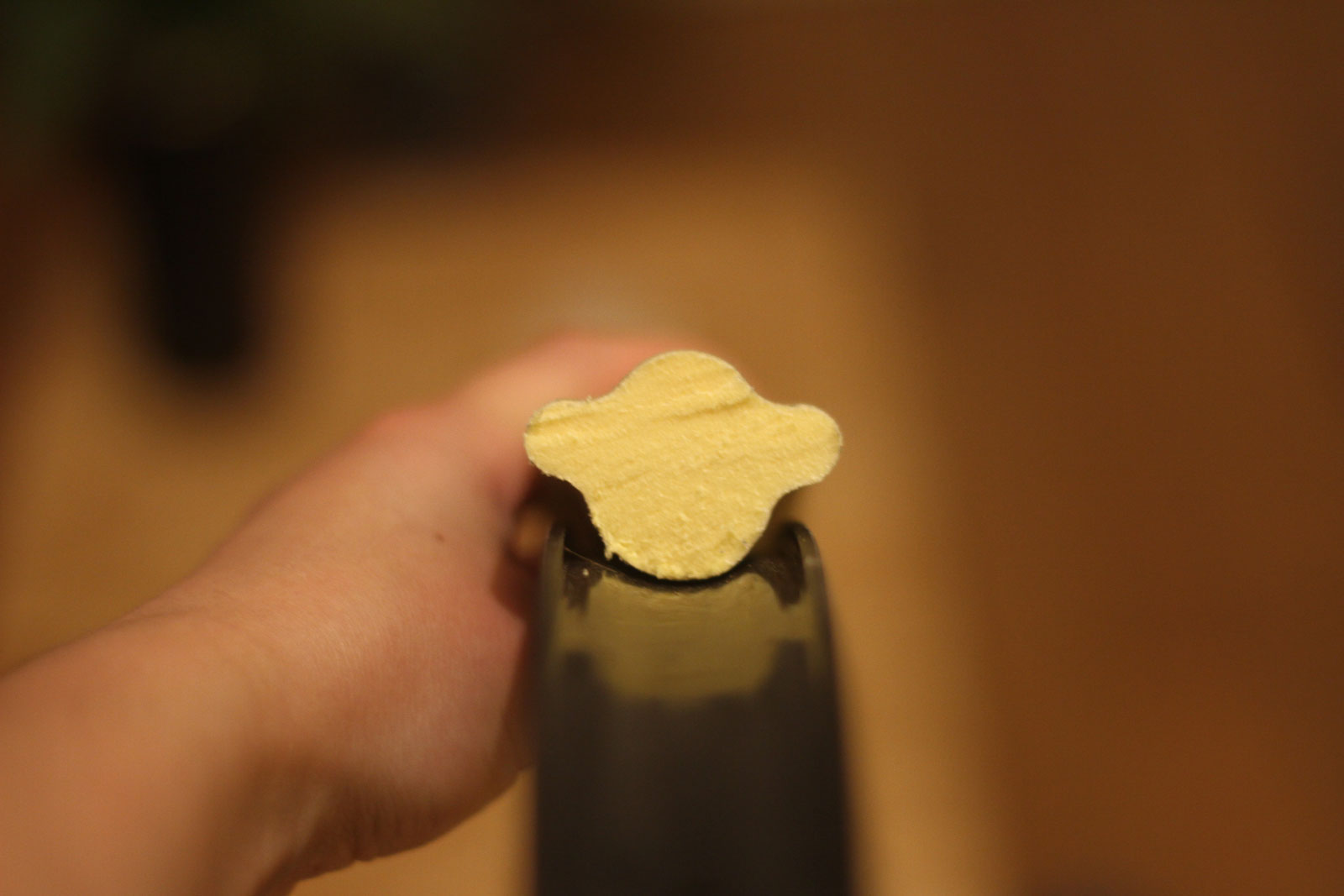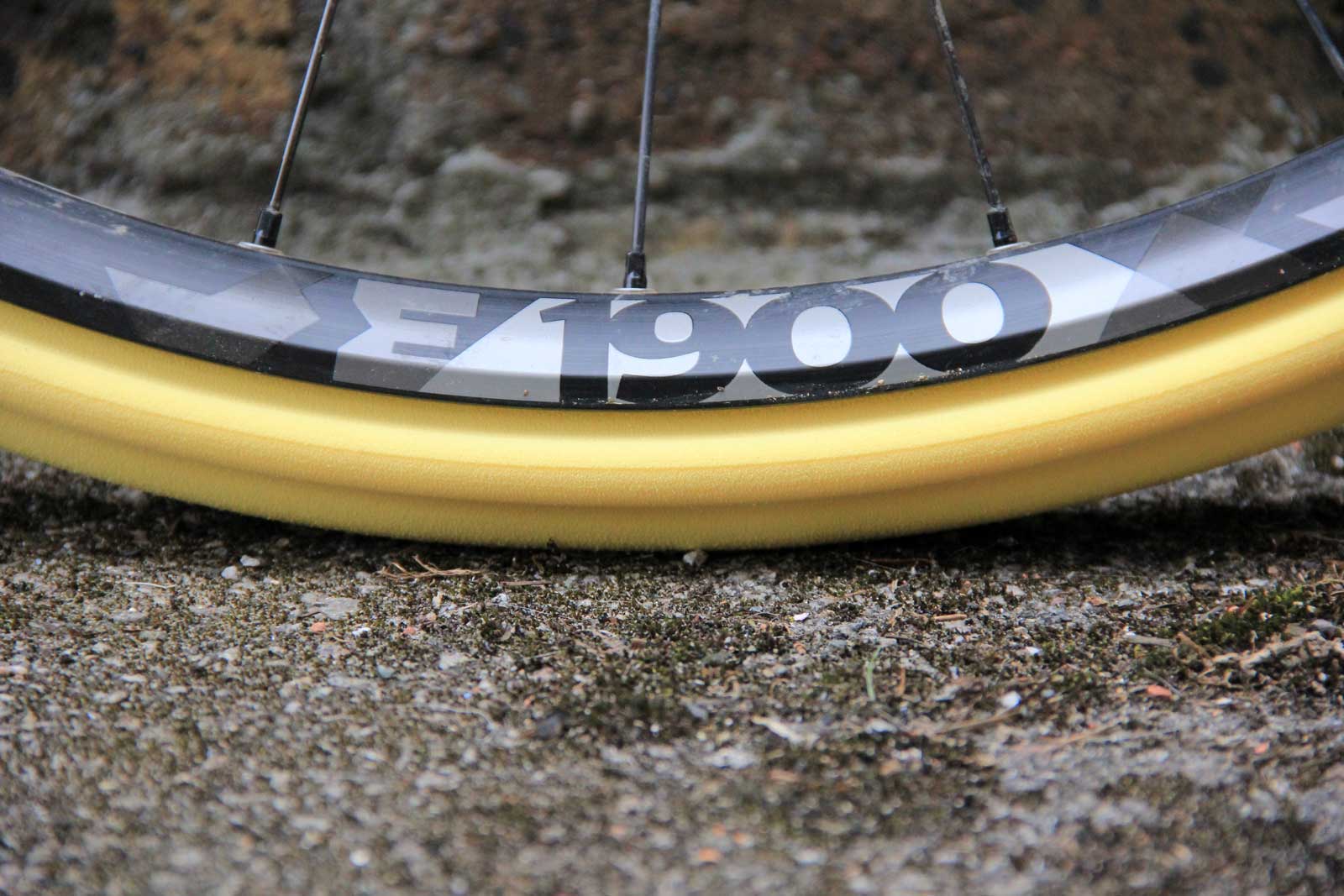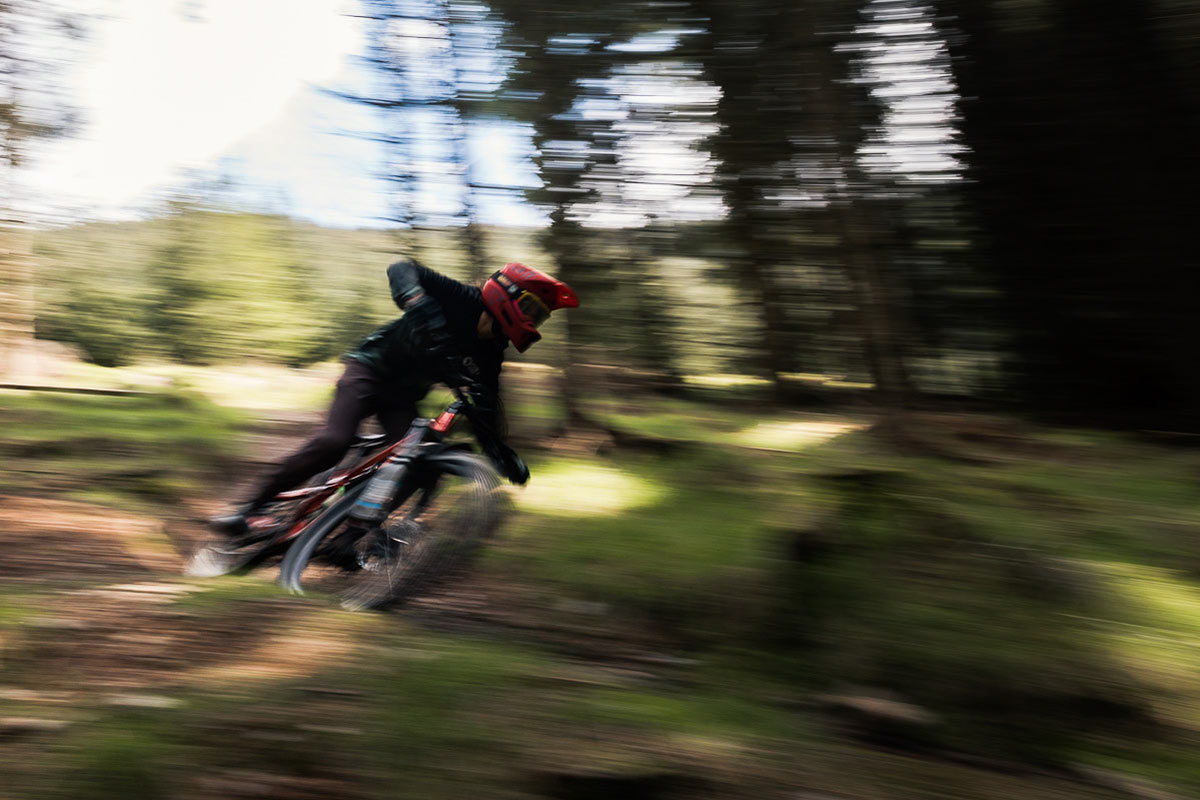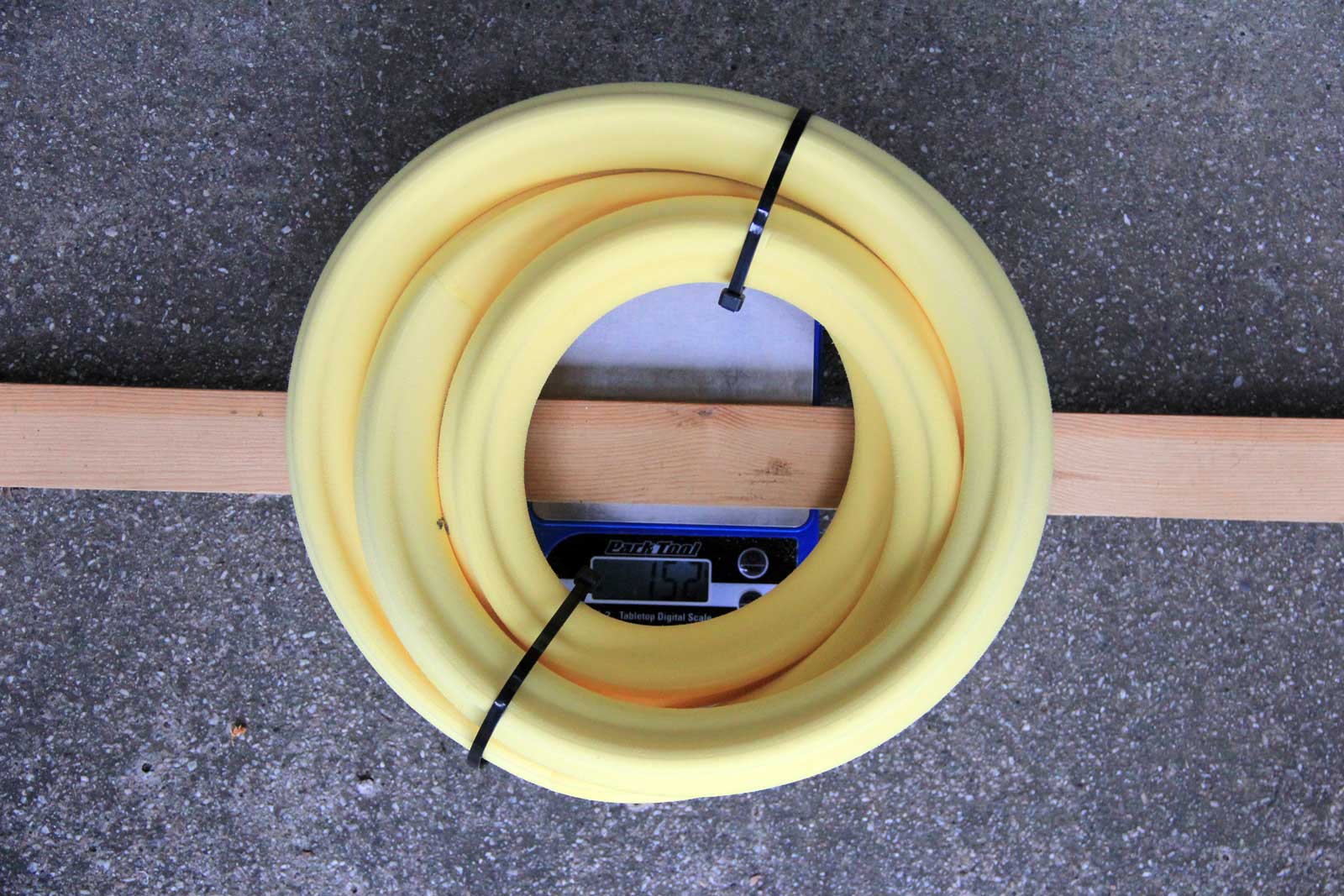ARD stands for Advanced Rim Defence; that would be the main selling point of the Nukeproof ARD tire insert we review here. Retailing at $69.99 USD, these are a relatively cheap option for rim protection, certainly in comparison to the likes of Rimpact PRO and CushCore PRO. But, are they any good?
We put them to the test on our local trails in the Tweed Valley, Scotland. Our trails aren’t particularly well endowed with rock gardens, but that’s not to say they’re by any means lacking in square-edged hit potential. To make sure we were giving the insert thorough testing, tire pressures were dropped way below our usual 21 PSI. Here’s how we got on.
Review: Nukeproof ARD
The 27.5″ Nukeproof ARD tire insert we tested weighed in at 152g (probably a bit less, didn’t weigh the cable ties). That’s one of the lighter ones we’ve tested so far, at least 100g lighter than CushCore Pro or RockStop. Off to a good start. The insert is made up of a single piece of closed cell foam that is shipped as a continuous loop. It is also shipped with the necessary tire insert compatible tubeless valves that allow sealant and air to flow freely, unhindered by the presence of the insert. These weigh 4.5g each.

The ARD insert is recommended for rim widths from 19mm up to 35mm. The insert itself is 41mm wide, at its widest point, and 30mm deep.
The insert is composed of closed cell foam throughout, with no hollow portions. It is quite firm to touch, though not quite as firm as CushCore Pro or RockStop inserts. Compressing the foam, it rebounds to its original shape fairly quickly, though not immediately; an imprint is visible for a few seconds after the initial compression.
Fitting the Nukeproof ARD
The Nukeproof ARD tire insert was set up on the rear wheel only, with a Nukeproof Horizon V2 rim (30mm internal width) and a Michelin Wild Enduro Rear. I never look forward to installing a tire insert, though I have to say, this one isn’t as tight a fit as others I’ve tried. As I would with a regular tubeless setup, I initially put one bead on the rim first. I then fit the ARD insert loosely inside the tire, positioning it onto the rim as I worked around it.
You then fit the second tire bead. This is the key bit. As you push the bead onto the rim, you want to make sure you push the bead underneath the ARD insert so that, when you come to popping the last section of bead onto the rim, there’s enough slack in the tire. Even doing that, I did have to use a tire lever for that last bit, but I’m sure there are plenty of folk out there who would pop it on easily by hand.

The tire insert compatible valves these are supplied with mean you don’t necessarily have to pour sealant into the tire beforehand. You can just inject it through the valve stem after you’ve fitted the tire. Personally, I’d dissuade you from doing that. The ARD insert lacks channels to allow sealant to pass freely from one side of the tire to the other, or from underneath the insert to the space above it.
I found I had to use a lot more sealant than I would for a regular tubeless setup, and more than I’ve used for setting up other brands’ tire inserts too (though probably not 100g worth). I put this down to the fact that the sealant wasn’t able to flow freely around the tire. You might be able to get around this by pouring a little sealant into the tire before pushing the final portion of bead onto the rim.
Is the ARD absorbing the sealant? No. The closed cell foam it is made of is non-absorbent. That said, there is always some sealant that is lost to the surface area of the insert. I would argue that the rough surface of the ARD insert likely harbors marginally more sealant than the smooth surface of CushCore.
On the Trail

I tested the Nukeproof ARD on the rear wheel only, running it on my Revel Rail enduro bike. I rode it for a three week period on my local enduro trails, recently host to the 2021 EWS season finale. These trails aren’t littered with the most challenging features for a tire insert, granted. They are a mixture of soft loam and hard pack ground, though we do have a select few rockier downhill tracks that have written off a few wheels before now. I tested the ARD insert on all of the above.

Going in with my usual 21 PSI in the rear, the first thing I noticed was that the ARD insert does rattle. It’s not as noticeable as the rattle from the RockStop insert, but it is there, nevertheless. I won’t hold the rattle against it though; every insert I’ve ever ridden has rattled, the quietest being the CushCore Pro, likely because it has the tightest fit.
At 21 PSI, it was also evident that I probably wasn’t testing the insert to its full potential. To ensure the tire was bottoming out on to the ARD insert more frequently, I dropped the rear tire pressure to 17 PSI. That harsh, sharp feeling you feel through your feet when rim bottoms out on the tire was replaced by more of a dull thud; evidence of the ARD insert absorbing the impact and damping vibration.

In corners, I felt no evidence of the tire rolling, despite those lower pressures. The ARD insert is likely offering some degree of sidewall support in that regard. It certainly stiffens up the side walls, as you can feel its presence underneath the tire wall when you give it a squeeze.

Removing the ARD insert after 3 weeks of use (which likely amounted to around 25 hours of ride time) I inspected it to find no evidence of any damage, either to the V2 Horizon rim or the ARD insert itself. That’s in contrast to other inserts I’ve tested on similar terrain that have come come away with numerous pinch holes, some with small chunks taken out of them. I remained puncture free throughout the test period.
Overall, the ARD insert performed well. I’d be happy to recommend it to anyone looking for reliable rim protection that doesn’t break the bank, and that’s relatively easy to install at home.
Pricing & Availability
Nukeproof ARD inserts are available for 27.5″ and 29″ wheel sizes, retailing at $69.99 USD per pair. Chain Reaction Cycles have it on sale at the minute, down at $51.99. You can also pick up an MX bundle (one 27.5″ and one 29″) for a mullet bike.


